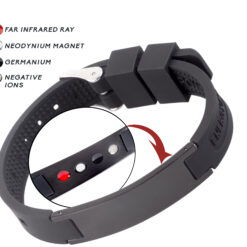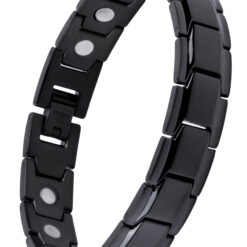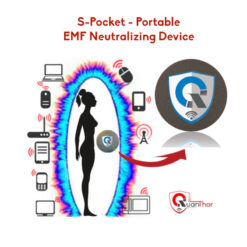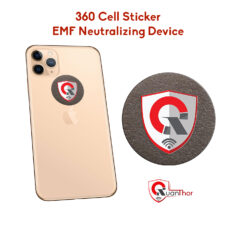Blog
Does Heavy WiFi Exposure Lead to Cancer?
WiFi is everywhere. You don’t see it, but it’s there – present in your home, school, and workplace. When you connect your mobile device, laptop, or wireless headphones to WiFi, you expose yourself to radiation. The question is, is it true that WiFi exposure leads to cancer?
Cancer Development
Cancer occurs when the cells of the body start to divide uncontrollably. Typically, cells divide to create new cells that the body needs. When old cells die, new cells usually take their place.
Because of cancer, the normal becomes abnormal, and old cells tend to live instead of die, and more cells form even when unnecessary. These unwanted cells divide continuously and may turn into a tumor.
People can inherit cancer from their parents, or they can acquire it because of harmful environmental exposures. Environmental factors that usually cause cancer include radiation and tobacco smoke.
WiFi and Daily Exposure
WLAN, or WiFi, is a network that transmits signals through an antenna so that electronic devices can gain access to the internet. WiFi utilized “pulsed” electromagnetic frequencies or EMFs, which is usually polarized and more dangerous than the non-polarized type.
To know whether WiFi exposure is safe, one must consider factors such as duration of exposure and intensity of pulses.
How WiFi Works
Wireless networks transmit radio waves through the air, which is a form of radiation similar to what computers, mobile devices, and Bluetooth speakers emit. There are two classifications of EMFs: non-ionizing and ionizing.
The non-ionizing type emits low levels of radiation, therefore, making it harmless. Bluetooth devices, laptops, computers, and mobile phones release non-ionizing EMF. However, concerns are raised because of daily exposure, thus increasing the need for us to have EMF protection.
On the other hand, ionizing radiation emits high levels of radiation that can cause DNA damage. X-rays and UV or ultraviolet rays transmit this type of radiation.
According to a study, prolonged exposure to WiFi cannot cause any DNA damage to the organs of the body except the testes.
WiFi Exposure Leads to Cancer and Other Health Conditions?
Dr. Sanchari Sinha Dutta, Ph.D., and Dr. Jennifer Logan, MD, MPH, believe that WiFi can have detrimental effects on a person’s body. WiFi causes oxidative stress and free radical production, which then results in DNA, lipid, and protein damages.
- On the reproductive system
Studies show that WiFi exposure reduces the production of female reproductive hormones, such as progesterone and estrogen. Low levels of these hormones can impair a woman’s fertility.
Moreover, prolonged exposure to WiFi can result in chromosomal mutations, therefore, causing miscarriages. One study shows that EMF can have adverse effects on the fertility of biological organisms, such as Drosophila Virilis and Drosophila melanogaster.
- On the brain
Regarding the effects of WiFi on the brain, animal studies reveal that radiation from WiFi can cause anxiety, but memory and spatial learning remain intact. Additionally, one research shows that prolonged exposure to microwave radiation equal to 2.45 GHz can promote tumor growth.
Note that, according to another study, garlic can decrease the effects of 2.45 GHz EMF. Exposure to microwave radiation increases the 8-OHdG level of the brain, but it was prevented with garlic.
Check our Products on Sale!
How WiFi Affects Your Health
According to an article evaluated by David E. Kozono, MD, Ph.D., the body absorbs EMF that a WiFi router emits. For that reason, an individual must distance him/herself from a router to lessen radiation and find ways to have EMF protection.
Note that the radiation a wireless router emits is less than what a mobile phone emits when you take a phone call.
Your mobile device exposes the head or ear to EMF, but because of your skin, radiation cannot affect your cells or DNA directly, as long as it’s non-ionizing radiation. However, if we talk about ionizing radiation, the skin cannot serve as a barrier to prevent cell damage.
Presently, no clear evidence proves that WiFi exposure leads to cancer. Although low-frequency EMFs are possibly carcinogenic, researchers still cannot verify whether WiFi exposure leads to cancer.
Therefore, the best way for a person to protect him/herself is by minimizing their use of WiFi.
Practical Ways to Lessen WiFi Exposure
Turn off Your WiFi before Going to Sleep
WiFi transmissions may affect brain activity during sleep, so it is suggestible to turn it off before sleeping. By doing that, you will cut down about 33% of WiFi exposure. There are WiFi router models that automatically turn on and turn off WiFi automatically according to your desired time.
Turn on Your WiFi Only When You’re Using It
If this is possible for you and your family to do, do it. By turning on your WiFi only when you use it, you effectively reduce WiFi exposure.
Turn Your Smartphone on Airplane Mode
Smartphones transmit EMF, especially when receivers are on. Since people usually have their mobile devices close to them, levels of exposure can be high. So, to lessen exposure, you can keep your phone on airplane mode.
Do Earthing
Wireless devices transmit positive ions that affect the waves within your body. Earthing will equalize the ions within our bodies since the earth produces negative ions.
What you need to do is to stand on the earth’s floor barefoot at least for 20 to 30 minutes daily. You can also walk along the shoreline or move along water streams if you are near the beach.
WiFi Exposure Leads to Cancer: Conclusion
Wi-Fi may be present everywhere, especially with the widespread use of devices that rely on this connection, but there are steps we can take to avoid and minimize the risks associated with exposure to EMF radiation.









